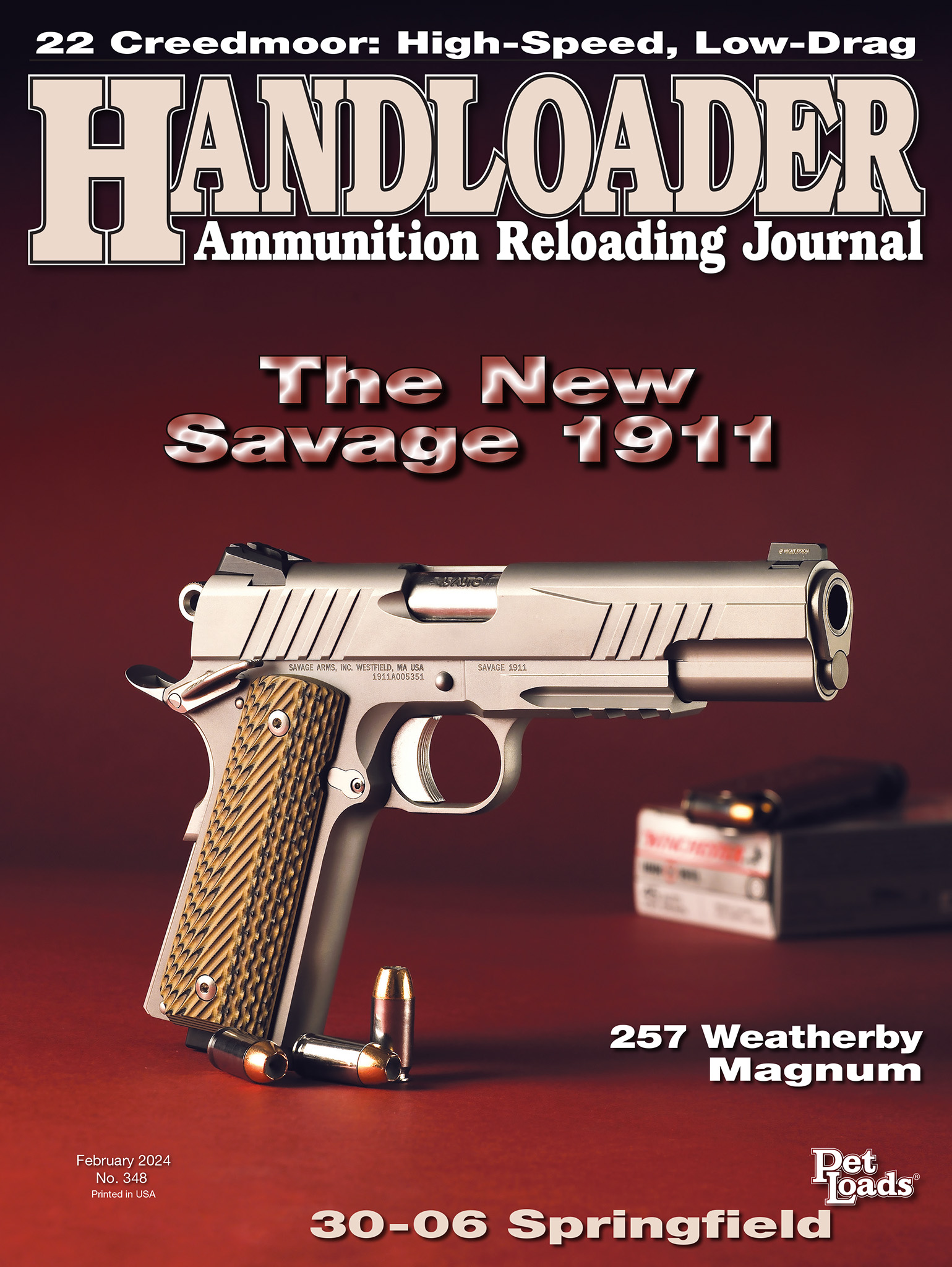Reloader’s Press
The High-Speed, Low-Drag 22 Creedmoor
column By: Jeremiah Polacek | February, 24
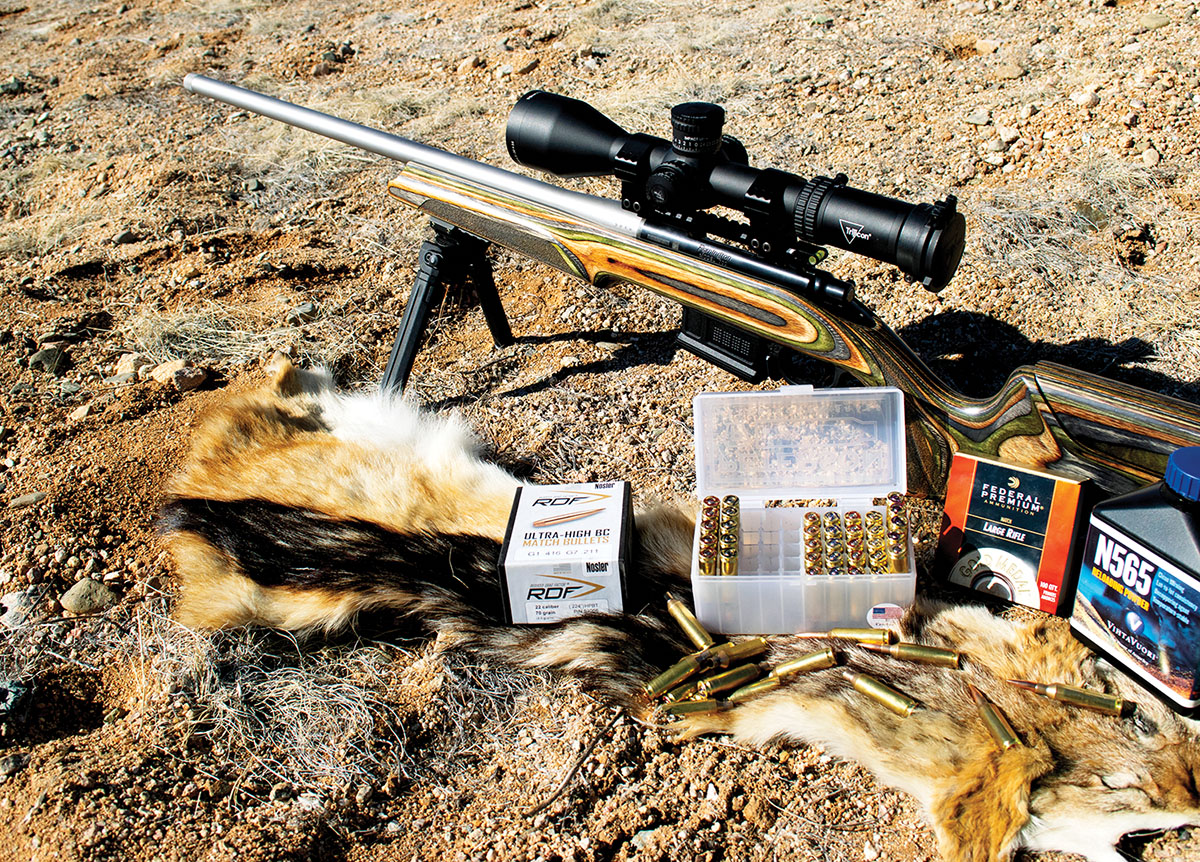
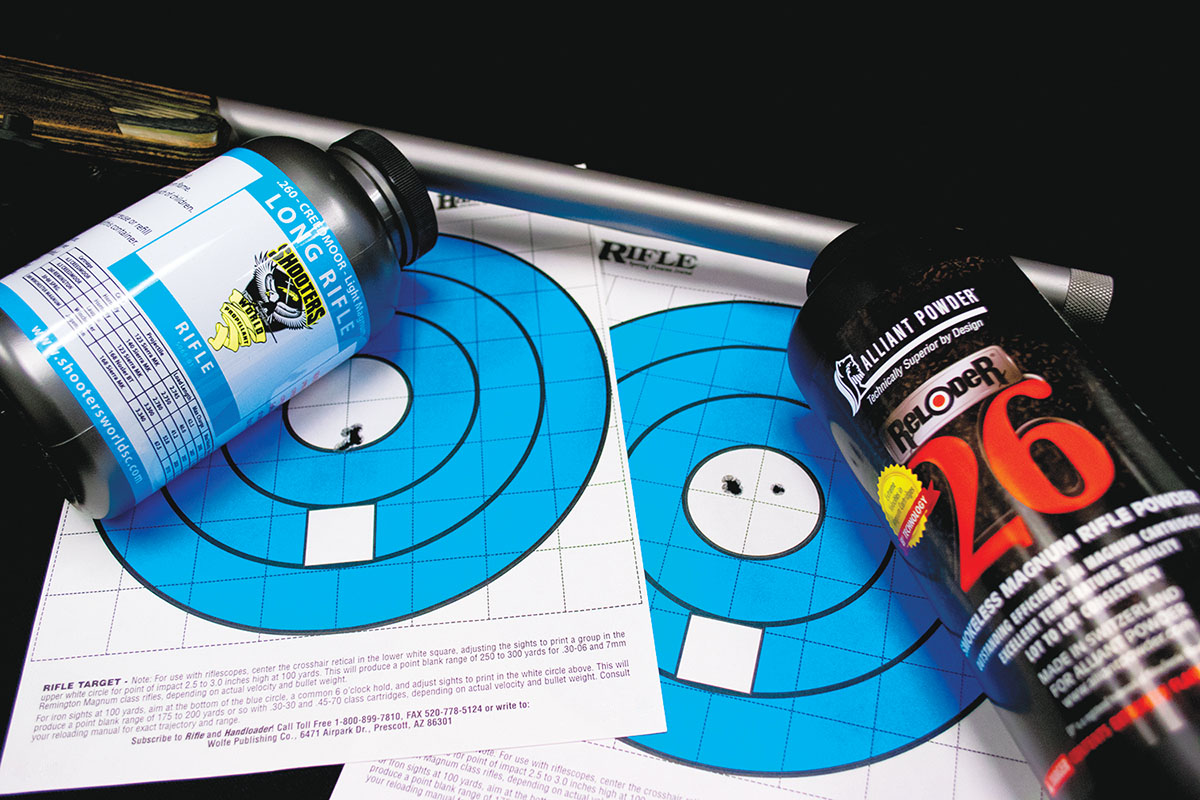
Credit must be given to Derrick Ratliff, founder of Horizon Firearms, working with Pacific Tool and Gauge, the first reamer was made and the first rifles were built in early 2014. The fight for recognition had begun and the competition in the cartridge lineup was stiff and long-established. The 22 Creedmoor was up against contenders such as the 220 Swift, 22-250 Remington and the 22-250 Ackley Improved (AI). While other wildcats were also contenders, those were the big cartridges that it had to prove itself against. Ballistically speaking, the 22 Creedmoor is very similar to the 22-250 AI with a fast-twist barrel.
Over the course of years, the 22 Creedmoor began to prove itself with some advantages over the other cartridges on the market. It is capable of launching heavy, high-BC bullets at impressive speeds, all with a case that does not require fireforming. The same cannot be said for the 22-250 AI, having to fireform cases shortens barrel life, which is a major consideration with these high-performance cartridges. While the 220 Swift may still be the speed king, it does it with lighter bullets, which sacrifices wind drift and energy on target when compared to the 22 Creedmoor.
While chatting with fellow Handloader contributor Patrick Meitin, he offered to loan me his custom-built 22 Creedmoor for some testing. The opportunity could not be passed up and immediately the offer was accepted and components were ordered. While waiting for the rifle and components to arrive, research was conducted on the cartridge itself. There was some limited pressure-tested data from Peterson Cartridge that offered a good starting point in addition to the data Patrick provided. After doing some digging, more loads were extrapolated from 22-250 AI load data along with the help of QuickLoad, plenty of data was compiled. By the time the components started to arrive, I think I had exhausted every internet article and forum on the subject.
It was interesting to hear what others thought of the cartridge, in particular the “fact” that it must burn out a barrel in 800 rounds or less. While others saw it as an amazing cartridge with ballistics so good nothing even comes close to it. As usual, the truth appeared to be somewhere in the middle. Nonetheless, testing needed to be conducted and data recorded to find out for sure.
The test rifle arrived and was inspected, a Remington 700 action trued and blueprinted by Dale Hegstrom, owner of Little Crow Gunworks, with a Stocky’s Stocks AccuBlock EuroMatch adjustable cheekpiece laminated stock. The trigger was a Timney Trigger, which broke clean and crisp at 1.57 pounds, a Magpul magazine-well kit and a 10-round PMag fed the hungry rifle. The barrel was stainless steel and made by Proof Research, it was 26 inches in length with a 1:7 twist. Lastly, a Trijicon AccuPower 4.5-30x 56mm scope with a 34mm main tube was added. Overall, it is a very nice package weighing in at 13.36 pounds.
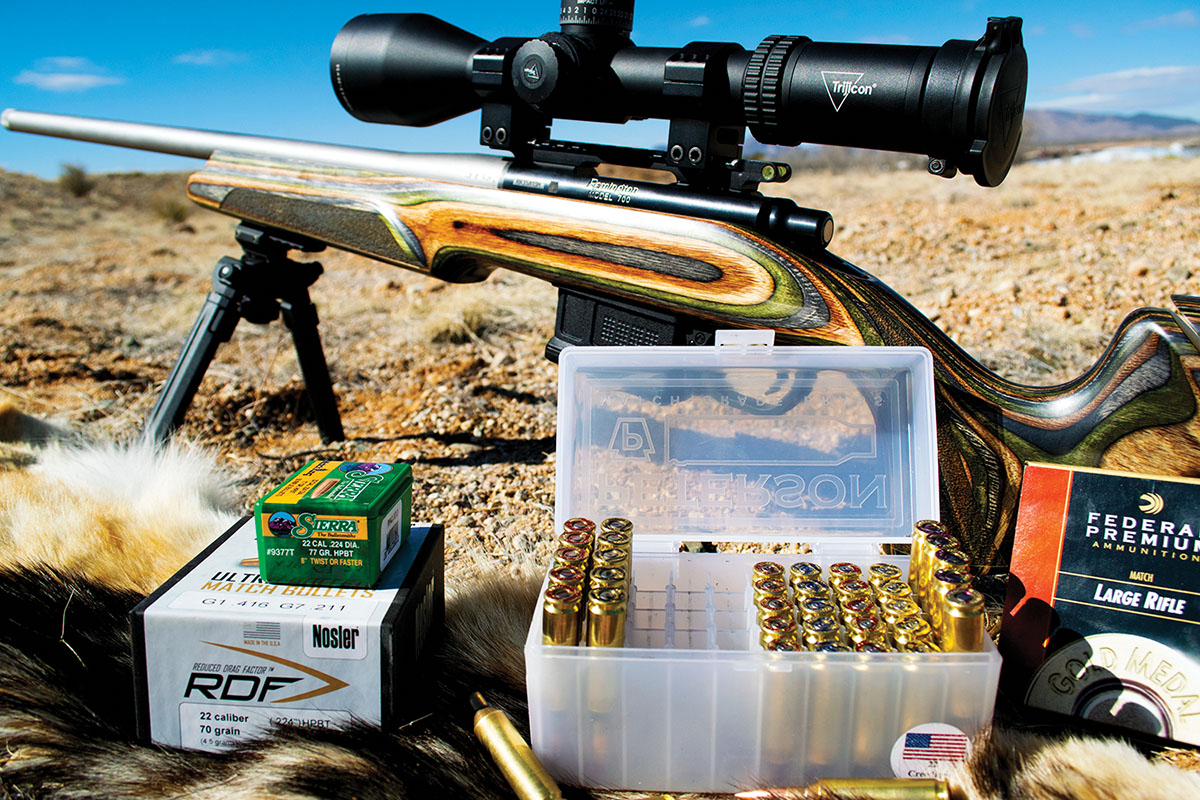
One interesting item that should be noted here is that when working with any cartridge, the brass that is selected can have a great impact on pressure. This is particularly true with the 22 Creedmoor as some Hornady cases were tested alongside the Peterson Cartridge cases. On average, the load would have to be reduced by 2.5 grains in the Peterson brass compared to the Hornady in order to achieve equal velocities.
After spending a lot of time on the range testing various loads, it was clear that this was a very accurate rifle. The setup and shooter were pushed to the limits in terms of accuracy with many groups opening up slightly by one shot outside of the otherwise single hole in the paper. This repeated for several days of testing recording velocity and checking the accuracy of various load combinations. One note of caution is that when pushing select bullets to maximum pressures of about 65,000 psi combined with the fast twist of the rifle, certain thinner jacketed bullets would spin themselves apart and disintegrate mid-flight. The 22 Creedmoor operates at the velocity and twist rate limits of some of these bullets and when fired with maximum loads, it is possible to experience jacket failures when operating at high pressure and velocities.
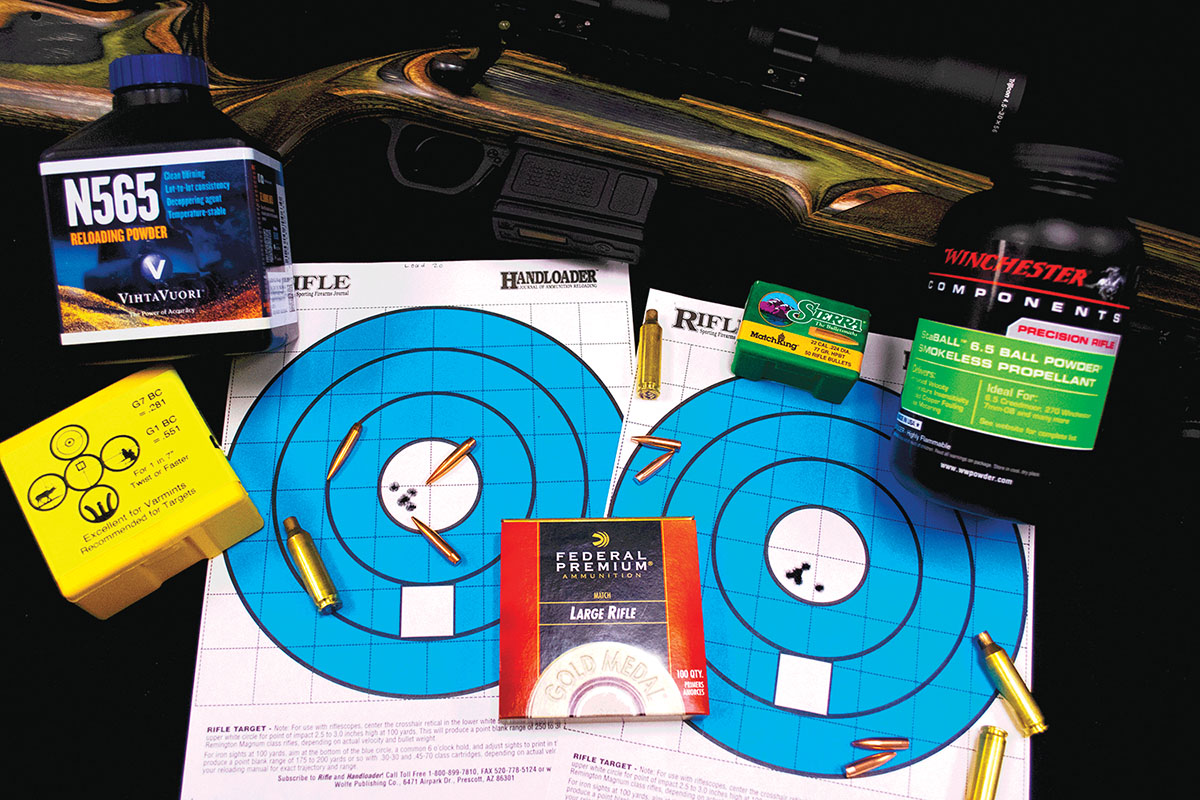
At the time of this writing, the Sporting Arms and Ammunition Manufacturers’ Institute (SAAMI) is set to approve this cartridge in 2024, and Hornady is already distributing factory ammunition through Horizon Firearms. Its days as a wildcat are numbered and the 22 Creedmoor is rapidly gaining traction. Looking at the ballistics, it is easy to see why. While many worry about barrel life, at the time of this writing, the rifle used for testing has more than 1,000 rounds without any sign of accuracy degradation. In chatting with other 22 Creedmoor owners, I have heard round counts as high as 2,000 without any noticeable decrease in accuracy. However, high-performance cartridges will need barrel replacements earlier than say, the 223 Remington. However, 1,500 rounds seems like plenty of room for working up good loads and hunting game from varmints to deer.
If you would like more information on the loads or this rifle, check out the video on our YouTube channel – Handloader TV.
.jpg)


